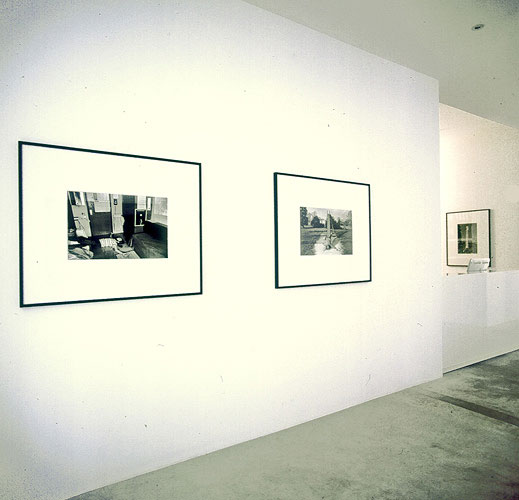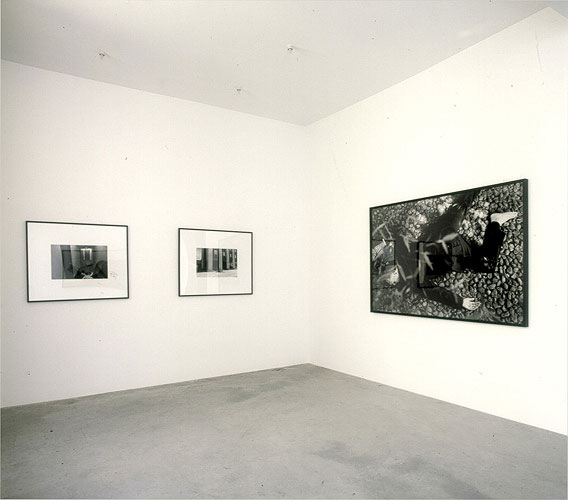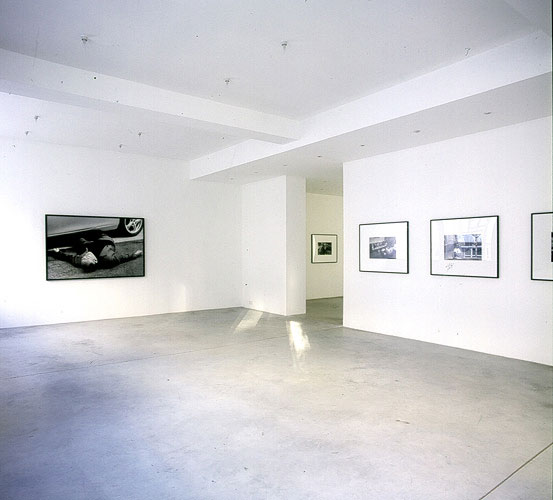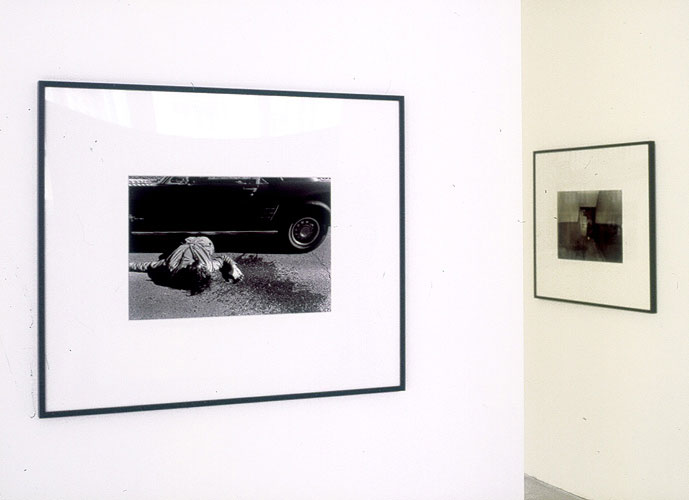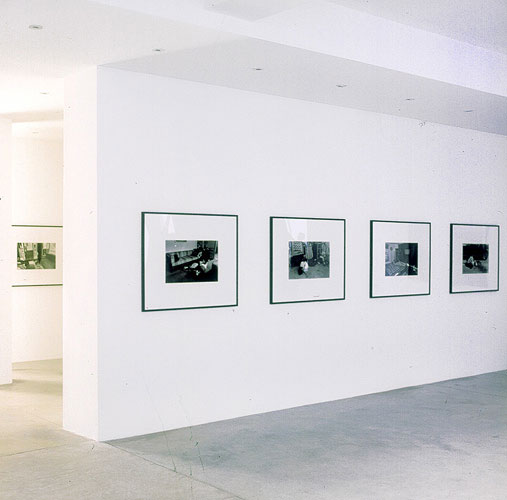Galerie Gisela Capitain, Köln.
January 13 – February 24, 2007
This is the first exhibition by Sam Samore in Europe that combines two series of photographs: The Suicidist from 1973 and The Suicidist (continued) from 2003-. Currently both series are shown at the P.S.1 Contemporary Art Center in New York (curated by Bob Nickas; until 29 January).
„In the revisited series, “The Suicidist (continued),” which includes pictures made between 2003 and 2006, Samore shifts from everyday interiors and settings, casual dress, and a midrange vantage point to more austere spaces, each tightly framed, and with the artist appearing impeccably dressed. The hippie/student of the 1973 pictures is now an international businessman, easily interchangeable with any other dark-suited, corporate figure. This transformation of the victim/protagonist is most heightened in pictures that echo a number of earlier compositions, most notably one in which a body is slumped over a pill-strewn desk. By bringing his camera closer to the scene, Samore draws the viewers into the picture—as if they have just discovered the body—and creates a dream-like atmosphere.
Playing the role of both actor and director, Samore stages his own death in various ways—strangled with a telephone cord, asphyxiated, overdosed—and examines a macabre psychology in works that are both cinematic and documentary. These black and white pictures evoke both contemporary film noir and a crime scene investigation, and also offer an eerie take on the self-portrait.“ (Bob Nickas)
„The photographic work of Sam Samore is linked to post-conceptual art of the 1970’s. In his well-known filmic work of the 1990’s Allegories of Beauty (Incomplete), and the 1980’s Situations, the artist made iconic pictures about beauty, antagonistic rivalry, voyeurism, non-linear narration and the isolated character marooned in his/her own existential drama. Authorship, the perception of the individual in the public domain and a focus on physical composure are aspects of these enigmatic images.
Early in his career Samore studied psychology, leading him to create a new body of work in 1973: The Suicidist, which set the tone for his later depictions of the anti-hero/heroine. An interest in literary devices, myths and fables, the film storyboard and exposition became established themes in his oeuvre. Text based installations, sound pieces and videos have further enhanced his investigations.
In place of the exalted, romantic American heroines of Cindy Sherman’s film stills from the same period, Samore inhabits in part the existential angst and anarchist comedy of La Nouvelle Vague. Predating the pre and post-millennial culture of medication or “pill society” they are in line with a literary tradition connected to author/artist as creative martyr.
The cinematic corpse also factors into The Suicidist, as seen in the final scenes of Godard’s A Bout de Soufle where the body of a dead Belmondo lies on a Paris street. The narrative endgame of rigor mortis however, is not assigned only to the photograph. Manet’s painting Le Toreador Mort shows a bullfighter laid flat on the ground, a lifeless body dressed in the finery of a showman now relegated to a shape and form on the canvas. Manet’s painting may be considered a precursor to filmic realism and the aspect ratio of body proportion to the frame within the camera lens.“ (Max Henry)

